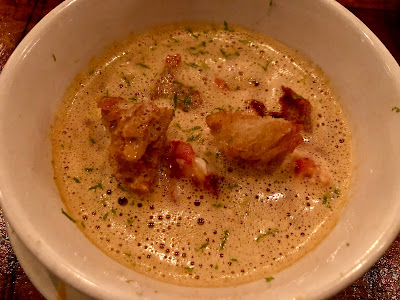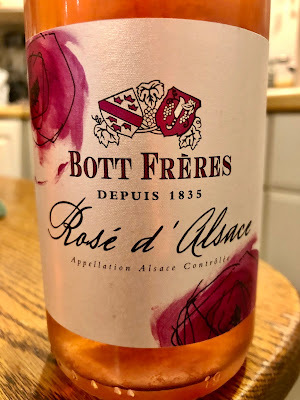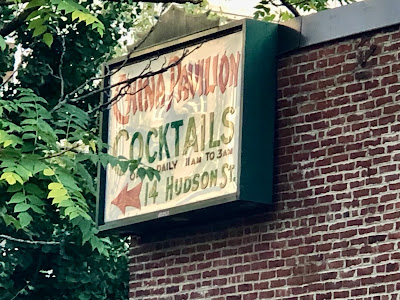With so many restaurants open, a sheer myriad of available options, and also due to the pandemic, I haven't always dined at all of the places I wish I could. I'm making an effort now to visit some of these spots, and one of my most recent explorations was at Pammy's in Cambridge, located not too far from Harvard Square. I'd previously heard many raves about Pammy's and it certainly lived up to my expectations. I want to provide my initial impressions of the restaurant, and I'm sure I'll be returning again to sample more of their menu.
Pammy's was opened in July 2017 by Chris & Pam Willis, husband and wife, and their website states it's "a New American restaurant inspired by the feel of an Italian neighborhood trattoria." Their website also states, "In defining his approach to food at Pammy’s, Chris believes in power of simplicity. Showcase just a few star ingredients in a dish and allow the care, knowledge and skill to shine through. Together, Chris and Pam’s goal is to serve unfussy, great food and channel their natural knack for hospitality."
The restaurant is very cozy, with such a welcoming ambiance. There are a couple tables next to a fireplace, which certainly would be great spots for a date or special occasion. There's also a 14-foot long communal table, various smaller tables, and larger booths. We sat at the communal table, which gave us a central location in the restaurant.
Their wine list is intriguing, with plenty of excellent options, especially more organic/sustainable options from small wineries around the world. There are about 14 wines available by the glass, including Sparkling, Rosato, and Orange wines. Their wine list by the bottle has plenty of options, with many priced under $70. You'll find primarily wines from Italy, but there are other fascinating wines from places including Vermont and Maryland, Oregon and California, and more.
We began our dinner with a glass of the 2020 Marangona Chiaretto Rosato, a delicious blend of Groppello, Marzemino, Barbera, & Sangiovese. It was fresh, dry and crisp with tasty red fruit flavors. And it went well with our initial food dishes. Next, we ordered a bottle of Palmento Costanzoa Etna Bianco 'Mofete', a blend of Carricante (70%), Catarratto (25%), Minnella & Trebbiano (5%). An excellent white wine, with great acidity, and a complex melange of peach and pear flavors, strong minerality, and some floral notes.
Onto the food...
Shaved Brussel Sprouts, with honey crisp apple, tonnato, and tonkatsu. It's not my type of dish, but my dining companion loved it! A fine blend of sweet and bitter, with some crisp textures. A great elevation for this vegetable.
Lobster Biscotto, with Rose Harissa and Pugliese crouton. There was plenty of plump, sweet lobster in a tasty broth, with floral notes and spices. The broth wasn't too thick and was bursting with flavor. On a chilly evening, this was a nice way to begin the evening.
Seared Foie Gras, with Concord Grapes and Milk Bread ($8 supplement). The decadent Foie was everything you want, being silky rich and flavorful. The Milk Bread was a nice addition, almost like a soft French Toast, and the fruit added some acidity to help cut through the rich Foie. A dish sure to please.
Lumache, with Bolognese sauce and Gochujang. This is a famed Pammy's dish which has received many accolades, and rightfully so. Gochujang is a Korean condiment, which is sweet, spicy and savory with a strong umami component. It works so well with the Bolognese, raising the spicy element, and upping the umami game. The Lumache pasta was perfect for this dish, and cooked just right. A beautifully composed dish and highly recommended.
Sea Scallops, with Grilled Avocado and 'Nduja Vinaigrette. Plump, sweet scallops, seared perfectly, were complemented well by the 'Nduja Vinaigrette. Another excellent dish.
Marshall Cove Mussels (grown in the waters of Maine), with Squid Ink Arancini and Lime Leaf Aioli. Delicious plump mussels in a compelling broth, excellent for dipping in bread. The Arancini were an excellent addition, a black, fried rice ball, with a pleasing savoriness and hints of the sea. The Arancini alone could have made a fine appetizer.
Rather than dessert, we opted for after dinner cocktails. The Gin & Juice ($14) is made with summer gin, salted watermelon, serrano and lime. It was refreshing, well-balanced and tasty with a nice blend of herbs, citrus and heat.
The Fevre Dream ($15) is composed of tequila, cachaca, passionfruit, coconut and Thai chili. It was also well-balanced with a tropical flair, a hint of heat, and a noticeable bite of tequila.
I was impressed with my dinner at Pammy's, from the wine to food, and I understand the reasons for all its raves. Service was excellent, I loved the ambiance, and the idea of choosing any three dishes for your meal is very cool. The Lumache was my favorite dish although all of the dishes were excellent. I highly recommend you check out Pammy's.















































